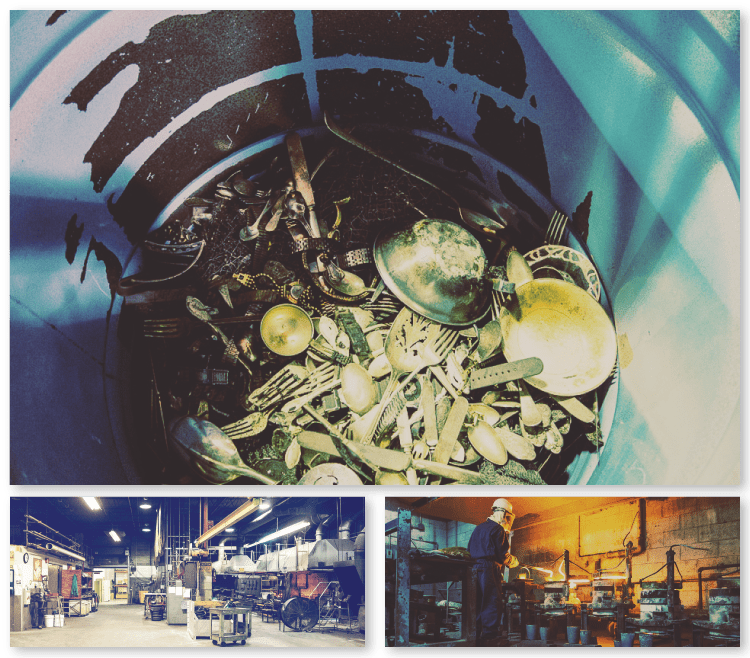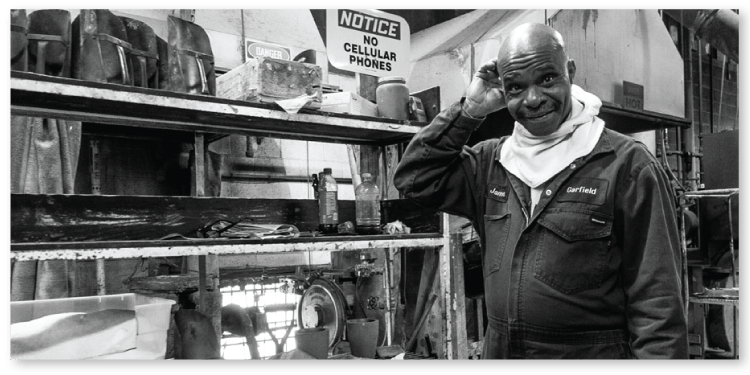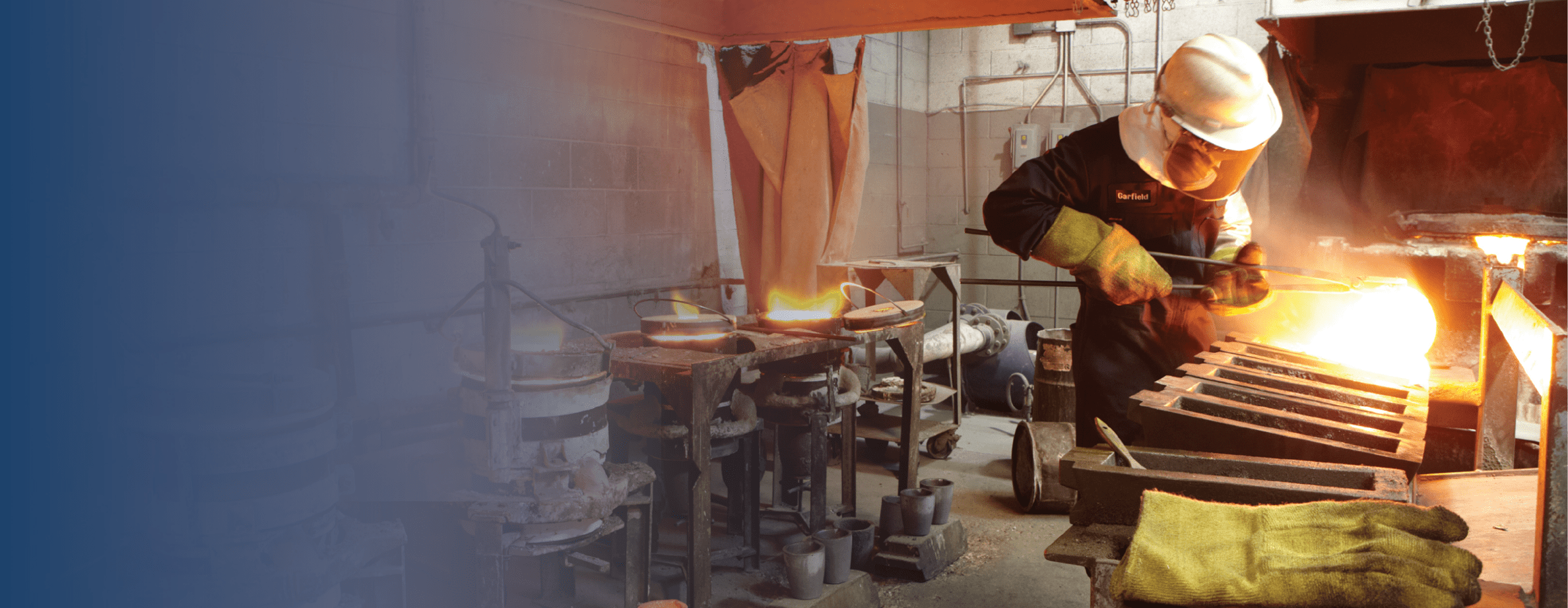
Enter through the lobby of this nondescript Juniata Park industrial building and, as one might expect, you are greeted with the high-security measures that are inherent in the gold refining business. Cameras, signs, bulletproof glass … it’s all the norm at Garfield Refining, the 122-year-old Philadelphia company.
A tour of the facility reveals the gold refining process from start to finish. Shipments arrive from literally all over the world and are taken to the intake room, where the packages are opened and assessed. A worksheet is generated with a detailed description and a preliminary weight for each item. Artillery shells, bullets, religious icons, and artificial joints—Garfield has seen quite an array of metallic materials come across its desk.
The values assigned to the deliveries are assessed the day of their receipt, based on that day’s gold market. Customers are given the option of swapping out their metals and taking the value in certified gold bullion in the form of coins or bars.
Geopolitical and economic forces in the commodities market naturally fluctuate the price of gold and other precious metals. But the one constant in play is the index used for valuation: the London Fix, the price of gold, determined twice a day (AM and PM) by the London Gold Market Fixing Ltd.

In the customer service area, each shipment of metals is examined and weighed. The metal is then prepared for melting and reweighed. Low-grade metals often require the addition of copper. Finally entering the actual refining area, we don OSHA-required safety glasses. Here, employee James Freeman expertly melts the loose metals individually into bars. The big furnaces that hold large lots can tilt forward and back to better control the molten liquids. Once melted, the bars are again weighed and core-drilled by Garfield employee Tito Jorge for sampling. The drill samples move on to the assay laboratory for analysis. All lots are identified from intake with control numbers that follow them around the facility.
The assay lab is where science and art meet. A high-tech x-ray fluorescence spectrometer computes the percentage of various metals in any given sample. It’s so specific that minute particles of gold, platinum, palladium, and silver can be detected and recorded.
Base metals have little to no value and around the refinery, there are plenty of examples. Buckets of watches, forks, costume jewelry, and coins are on display, discarded in the sorting and analysis process. Truly, they’re nothing new to the folks at Garfield Refining—founded in 1892 as Eastern Smelting and Refining by Isaac Garfield—a company of roughly 50 employees between the office, shop, and across the nation, where field reps work with jewelers, dentists, pawn shops, and gold buyers and sellers.


